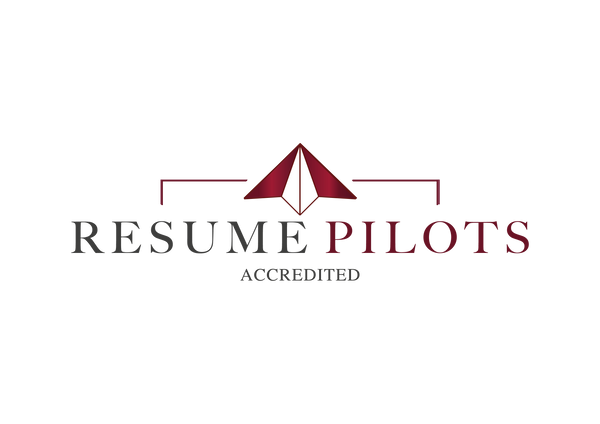
ATS Résumé File Types: Word vs PDF in 2025
📌 This article is part of our Quick Wins & ATS Mastery series. If you’re new here, start with The 10-Minute ATS Fix: Simple Résumé Tweaks That Boost Interviews, then read Résumé Keywords: How to Mirror Job Descriptions Without Keyword Stuffing, Formatting That Survives ATS Parsing (Without Looking Outdated to Recruiters), How Recruiters Skim: The 6-Second Test for Your Executive Résumé, Applicant Tracking Systems in 2025: What Changed and What Hasn’t, and Cover Letters That Get Read in the ATS Era. This is the final post in our ATS Mastery series.
One of the most common questions executives ask is: should I send my résumé as a PDF or a Word file?
It’s not a trivial decision. PDFs look sharp and preserve formatting perfectly, but not every applicant tracking system (ATS) can parse them accurately. Word files, on the other hand, are nearly always ATS-safe — though they sometimes display differently depending on the recruiter’s system.
So what’s the right file type to use in 2025? Let’s break it down.
Why Word Files Are Still the Safe Bet
Microsoft Word (.docx) remains the most reliable format for ATS applications.
- Universally accepted by ATS platforms.
- Less likely to cause parsing errors.
- Recruiters can easily copy/paste information.
👉 FAQ: Is Word the safest file type for ATS?
Yes. If the job posting doesn’t specify, a .docx file is your safest choice.
The Benefits and Risks of PDFs
PDFs guarantee your résumé looks exactly how you designed it, no matter the device.
- Perfect for emailing directly to recruiters or headhunters.
- Great for printing or professional networking.
- Layout remains consistent.
The downside? Not all ATS handle PDFs correctly. Some older systems misread formatting, which can scramble or even omit key information.
👉 FAQ: Do PDFs always cause ATS issues?
No. Most modern ATS can process PDFs — but not all, which makes PDFs riskier than Word files for online applications.
When to Use Each Format
The smartest strategy is to choose based on the context:
- ATS applications → Submit a Word (.docx) unless the posting specifically asks for a PDF.
- Direct recruiter contact → Send a PDF so your formatting is preserved.
- Networking and printing → Always use PDF.
🚀 Not sure whether your résumé formatting passes ATS checks? Our Professional
Résumé Review highlights design issues and provides a tailored action plan. Save
$60 with code PRR60 today
Keep Both Versions Ready
Executives should maintain two versions of their résumé:
- An ATS-optimized Word file for online submissions.
- A PDF for recruiters, networking, and personal use.
👉 FAQ: Should I keep both Word and PDF versions of my résumé?
Yes. This way, you’re covered for any situation — whether applying online or networking directly.
Formatting Tips for Any File Type
Regardless of whether you use Word or PDF, follow these rules:
- Stick to standard fonts like Arial, Calibri, or Times New Roman.
- Avoid tables, graphics, or logos.
- Keep layouts linear and simple.
- Save PDFs as text-based (not scanned images).
👉 FAQ: What file types should I avoid for ATS?
Never upload scanned résumés or unusual formats like .pages or .odt. Most ATS cannot parse them, and your application may be discarded automatically.
Final Thought
So, will a PDF break ATS? In 2025, not necessarily — but it’s still riskier than Word. If in doubt, use Word for online submissions and keep a polished PDF for networking and recruiter outreach.
✅ Next Step: Want to be sure your résumé is truly ATS-ready? At Resume Pilots, our ATS Résumé Review tests your document against real systems recruiters use and shows exactly what to fix.
🎯 Take the Guesswork Out of Job Applications
Stop worrying whether your résumé design is holding you back.
Our tools give you a proven edge:
Résumé Reviews – Save $50
Get recruiter-level feedback on content, formatting, and ATS compatibility, plus a
personalized action plan. Use code PRR50 to save $50
Résumé Template Bundles – Save $40
Prefer a do-it-yourself approach? Our ATS-optimized templates come with a storytelling
framework, checklist, metrics tracker, and scorecard — everything you need to build a résumé
that wins attention. Use code RTB40 to save $40
These resources cut through the uncertainty so you know exactly what
recruiters and ATS software are looking for.
📌 This article is part of our Quick Wins & ATS Mastery series. If you’re new here, start with The 10-Minute ATS Fix: Simple Résumé Tweaks That Boost Interviews, then read Résumé Keywords: How to Mirror Job Descriptions Without Keyword Stuffing, Formatting That Survives ATS Parsing (Without Looking Outdated to Recruiters), How Recruiters Skim: The 6-Second Test for Your Executive Résumé, Applicant Tracking Systems in 2025: What Changed and What Hasn’t, and Cover Letters That Get Read in the ATS Era. This is the final post in our ATS Mastery series.

